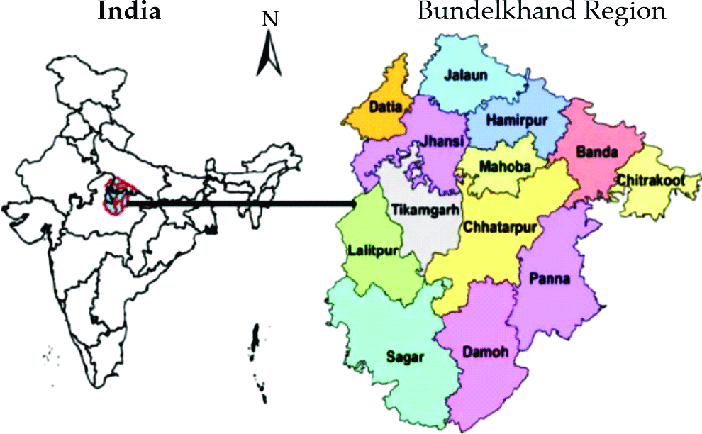The Bundelkhand region of India, which encompasses parts of the states of Uttar Pradesh and Madhya Pradesh, is known for its chronic water scarcity and drought-like conditions. There are several factors that contribute to the region’s water scarcity and drought-like conditions, including:
- Climate change: The Bundelkhand region is known for its arid and semi-arid climate, which is characterized by low rainfall and high temperatures. Climate change has led to an increase in the frequency and intensity of droughts in the region, making it increasingly difficult for the local population to access water for their daily needs.
- Deforestation: The Bundelkhand region is known for its rich natural resources, but decades of deforestation have led to a decline in the region’s forest cover. This has had a significant impact on the region’s water cycle, as forests play an important role in maintaining the region’s water supply.
- Soil erosion: The Bundelkhand region is known for its rocky and hilly terrain, which is prone to soil erosion. This has led to a decline in the region’s soil fertility, making it difficult for the local population to grow crops.
- Over-exploitation of groundwater resources: The Bundelkhand region is dependent on groundwater for its water needs, but the over-exploitation of these resources has led to a decline in the region’s water table. This has made it increasingly difficult for the local population to access water for their daily needs.
- Lack of proper water management: The Bundelkhand region lacks proper water management systems, which has led to a decline in the region’s water supply. This has made it difficult for the local population to access water for their daily needs and for irrigation.
- Poor infrastructure: The region also lacks proper infrastructure, which makes it difficult for the local population to access water for their daily needs. The region also lacks proper irrigation facilities, which results in poor agricultural productivity.
- Lack of Governmental efforts: Despite the chronic water scarcity and drought-like conditions in the region, the government has not been able to implement effective measures to address the problem. The government schemes have not been able to provide adequate water for drinking and irrigation purposes.


